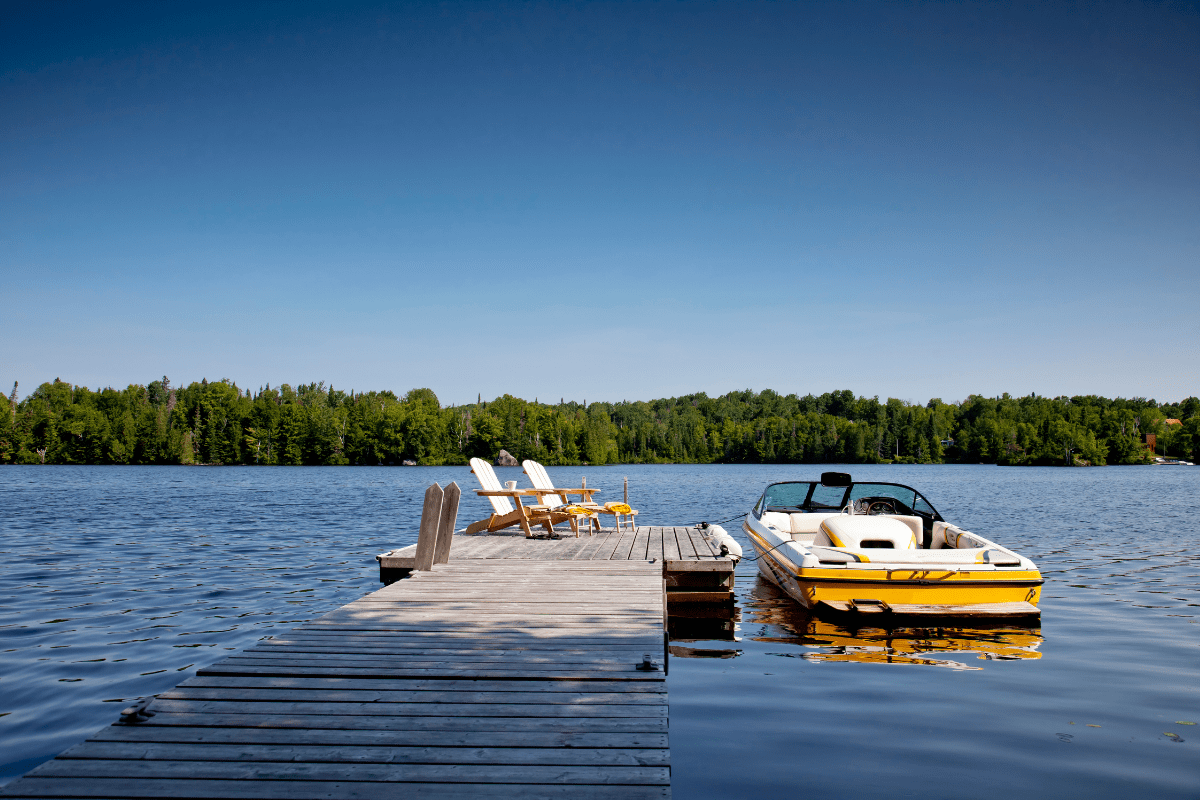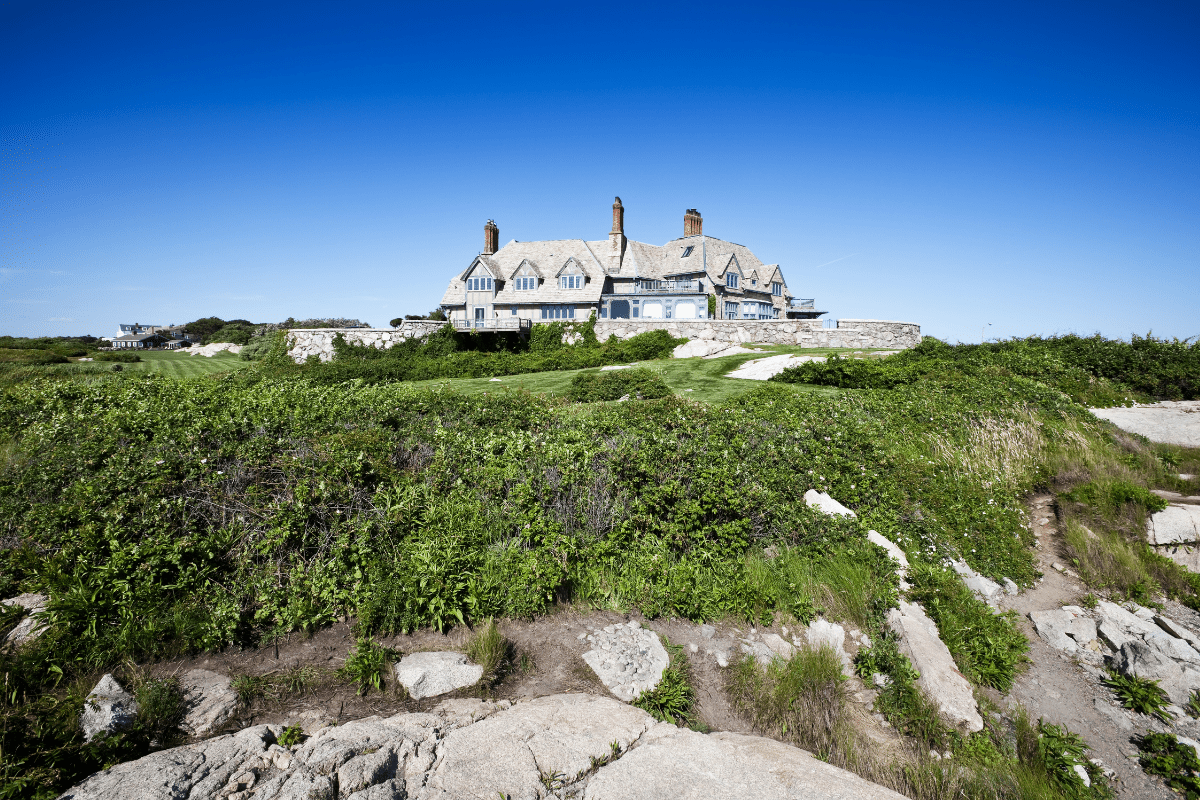Rhode Island might be the smallest state, but don't let that fool you into thinking our lakes are tiny puddles. With 237 freshwater lakes sprawling across 20,000+ acres, we've got everything from ankle-deep wading pools to 60-foot diving holes that'll make your ears pop.
The lakes everyone actually visits
Let's start with the heavy hitters, the lakes that show up on every "Best of Rhode Island" list for good reason.
Worden Pond: Where size matters (sort of)
At 1,051 acres, Worden Pond is our biggest natural lake, though calling it "deep" would be like calling Rhode Island "spacious." The average depth is 4 feet, maxing out at 6 feet, which means you could probably walk across most of it if you didn't mind getting soggy. Located in South Kingstown at coordinates that only matter if you're a GPS (41.4394°N, -71.5792°W), this glacial kettle pond is where serious anglers go to catch northern pike and largemouth bass.
The public boat launch sits on Worden Pond Road, about half a mile west of Route 110. It's a cement plank ramp with enough gravel parking that you won't have to parallel park your boat trailer… usually. The pond connects to the 3,349-acre Great Swamp Wildlife Management Area, creating a paddling network so extensive you could get lost and miss dinner. Speaking of history, this area witnessed the 1675 Great Swamp Fight during King Philip's War, though the fish don't seem to care about that.
Here's the catch (pun intended): invasive hydrilla was detected in November 2023, so there's a boat cleaning station coming in 2025. Until then, please clean your boat like you're trying to impress your mother-in-law.
Watchaug Pond: The overachiever
Burlingame State Park's crown jewel, Watchaug Pond, spans 573 acres and plunges to 36 feet deep, which is practically the Mariana Trench by Rhode Island standards. This Ice Age kettle lake hosts Rhode Island's largest campground with 755 campsites and 20 cabins. Yes, that's more campsites than some towns have houses.
The lifeguarded beach operates 9 AM to 5 PM during the season, and the 8.5-mile John Vincent Gormley Trail loops the entire pond for those who think swimming isn't enough exercise. Personal watercraft are prohibited, which means no jet skis ruining your peaceful morning paddle. The campground boat ramp is closed for construction through 2025 (because of course it is), but you can use the Barton C. Hurley Landing on Sanctuary Road instead.
Spring brings stocked trout that practically jump into your boat, while summer sees excellent largemouth bass and pickerel fishing. Camping reservations through ReserveAmerica are essential unless you enjoy sleeping in your car.
Johnson's Pond: Where wakeboarding dreams come true
Officially called Flat River Reservoir but known to everyone as Johnson's Pond, this 659-acre lake averages 18 feet deep. Wakeboarding Magazine named it Rhode Island's best wakeboarding spot, presumably after trying all three other options. The protected waters and consistent depths do create ideal conditions for water sports, assuming you don't mind the occasional cyanobacteria bloom advisory during hot summers.
The town of Coventry acquired the pond via eminent domain in 2024 following dam safety concerns, with $3.5 million in repairs planned. Because nothing says "fun lake day" like infrastructure updates. Public access at Zeke's Bridge features a concrete ramp with gravel parking, and there's a local marina for those with boats fancier than a kayak.
The western shore borders the George B. Parker Woodland Wildlife Preserve's 800+ acres, where mysterious prehistoric stone cairns puzzle archaeologists and confuse hikers who think they're trail markers.
The ones that can't pick a state
Some lakes just refuse to commit to one state, straddling borders like they're playing jurisdictional hopscotch.
Beach Pond: The rule breaker
Beach Pond sprawls across 372 to 430 acres (nobody can agree on the exact size) between Rhode Island and Connecticut. With a maximum depth of 60 feet, it's one of our deepest lakes, though swimming's been prohibited since 2008 due to erosion control measures. Because nothing says "beach pond" like "no swimming allowed."
The Rhode Island side sits within Arcadia Management Area, with Route 165 parking for hand-carried boats only. Connecticut's Pachaug State Forest offers a motorboat launch on North Shore Road for those who prefer horsepower over arm power. Either state's fishing license covers the entire pond, with Rhode Island regulations applying throughout.
Rock climbers love the 40-foot cliff faces at Hemlock Ledges on the Rhode Island shore, where you can practice your Spider-Man impression while everyone else is fishing for largemouth bass, smallmouth bass, chain pickerel, brown trout, rainbow trout, and walleye.
Wallum Lake: The overachiever's paradise
Spanning 322 acres between Burrillville, Rhode Island and Douglas, Massachusetts, Wallum Lake has been called the "freshest, cleanest, coldest" waterbody in Rhode Island. Fed by underground springs, the crystal-clear waters are so pristine you can often see fish before they see you, which doesn't help your catch rate as much as you'd think.
The north end's paved boat ramp in Douglas allows gas-powered boats, while Rhode Island's south shore canoe launch off South Shore Road technically prohibits motors, though enforcement is about as consistent as New England weather. The lake serves as drinking water for Eleanor Slater Hospital, so please don't do anything weird in it.
Wildlife enthusiasts regularly spot bald eagles, osprey, otters, and herons along the 5.3-mile shoreline. The adjacent 2,000-acre Buck Hill Management Area provides extensive hiking for those who think lakes are just the starting point for adventure.
The secret spots locals won't tell you about (except I will)
Every Rhode Islander has their secret lake, the one they only tell their best friends about. Well, consider us friends.
The family favorites nobody knows
Little Nini Pond in Charlestown's Ninigret Park is the anti-Misquamicut Beach… a spring-fed freshwater oasis that locals whisper about rather than advertise. Much smaller than the nearby saltwater Ninigret Pond, Little Nini features crystal-clear warm water perfect for toddlers learning to swim. The sandy beach slopes gradually, eliminating those terrifying drop-offs that make parents hover like helicopters.
Access comes via Park Lane near the pavilion and playground, with free parking steps from the water. During Labor Day weekend's Rhythm and Roots Festival, it becomes a secret cooling-off spot for those in the know. No boat launch exists, keeping the jet ski crowd at bay.
Spring Lake in Burrillville defines family paradise with its 750-foot sandy beach, waterslides at water's edge, and a vintage penny arcade that'll transport you back to 1982. Lifeguards patrol from 10 AM to 7 PM, while $2 kayak rentals let families explore without taking out a second mortgage. Daily fees run $5 for residents and $8 for non-residents, with kids under 3 free.
Peck Pond occupies just 13 acres within Pulaski State Park in Chepachet, yet delivers serious charm. Locals describe it as a "secret swimming hole" with a sandy shore, seasonal lifeguards, and a fairy tale footbridge leading to a waterfall that Instagram doesn't know about yet.
Where paddlers find their zen
Lake Washington in Glocester enforces an electric motors only policy that transforms this 41-acre lake into paddling nirvana. Sitting at 604 feet elevation adjacent to George Washington Campground, the lake attracts serious kayakers and paddleboarders who appreciate the absence of engine noise more than monks appreciate silence.
Breakheart Pond in Arcadia Management Area takes solitude seriously with rules prohibiting swimming, cooking, and fires. These restrictions keep crowds away from its 44 acres, where white pine forests reflect in waters so still you'll question whether time has stopped.
The fishing intel you actually need
Rhode Island stocks over 110,000 trout annually across 100+ locations, with Opening Day on April 12, 2025 seeing 60,000 fish released. The season runs through February 28, 2026, and licenses are available at rio.ri.gov.
The must-know regulations:
- Largemouth and smallmouth bass: 12" minimum, 5 daily
- Northern pike: 24" minimum, 2 daily
- Chain pickerel: 14" minimum, 5 daily
- Trout Conservation Stamp required for keeping trout
- Ice fishing allows 5 lines per person
- Winter stocking includes lake trout and salmon
Stafford Pond in Tiverton draws serious anglers to its 480 acres averaging 8 feet deep. Local guides recommend deep-diving crankbaits near drop-offs during summer heat when bass seek cooler depths like teenagers seek air conditioning.
Indian Lake's 200 acres in South Kingstown consistently produce trophy largemouth bass, with the state record exceeding 11 pounds. Expert anglers target dawn and dusk feeding windows using topwater lures, especially during summer months when bass patrol shallow structure like aquatic security guards.
The practical stuff nobody tells you
Here's what you actually need to know before loading up the car.
Money matters
State beach parking passes cost $30 for Rhode Island residents or $60 for non-residents, covering the full season. Daily parking runs $6-7 for residents, $12-14 for non-residents. Seniors over 65 get half off, while properly documented disabled visitors park free. Most parks open sunrise to sunset year-round, though beach facilities operate seasonally like ice cream trucks.
Groups of 10 or more need Special Use Permits applied for 30 days in advance, because spontaneous large gatherings are apparently suspicious. Boat registration through Rhode Island Outdoors is mandatory for all motorized watercraft, even that ancient outboard your uncle gave you.
The environmental reality check
The University of Rhode Island's Watershed Watch program has monitored lake health since 1988, tracking some concerning trends. Mercury contamination affects 52 lakes with fish consumption advisories. Over half of assessed lakes show elevated phosphorus and low dissolved oxygen from nutrient pollution. Invasive aquatic plants impair 73 waterbodies as of 2022.
Cyanobacteria blooms increasingly close beaches during hot summers, with Johnson's Pond facing multiple advisories in 2024. Beach closures trigger when enterococci bacteria exceeds safe levels, with real-time data available at health.ri.gov/data/beaches.
When to actually go
Peak season runs May through October, with July and August bringing the warmest water but also crowds that'll make you question humanity's distribution patterns. Memorial Day through Labor Day sees full lifeguard coverage and all facilities operating, though parking fills by 9 AM at popular spots.
Spring and fall offer excellent fishing with lighter crowds and cooler temperatures that won't melt your sunscreen off. Winter transforms select lakes into ice fishing and skating destinations, assuming the ice cooperates, which it does about as often as Rhode Island drivers use turn signals.
The seasonal workforce struggles that DEM Director Terry Gray highlighted affect lifeguard coverage and facility operations, so arrive early or late season prepared for reduced services and possibly having to rescue yourself.
The bottom line
Rhode Island's lakes compress remarkable diversity into our postage-stamp state. From wakeboarding Johnson's Pond to meditation paddling on Breakheart, from cliff jumping at Beach Pond to toddler swimming at Little Nini, these 237 bodies of water deliver experiences that linger long after your sunburn fades.
Whether you measure success in bass caught, miles paddled, or children exhausted enough to sleep through the night, our freshwater treasures reward those who venture beyond the famous coastline. Just remember to clean your boat, respect the regulations, and maybe keep that secret spot to yourself… or at least only tell your best friends.





